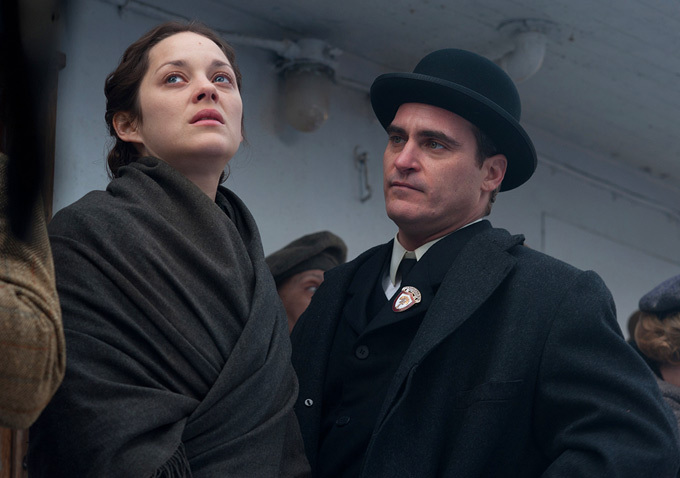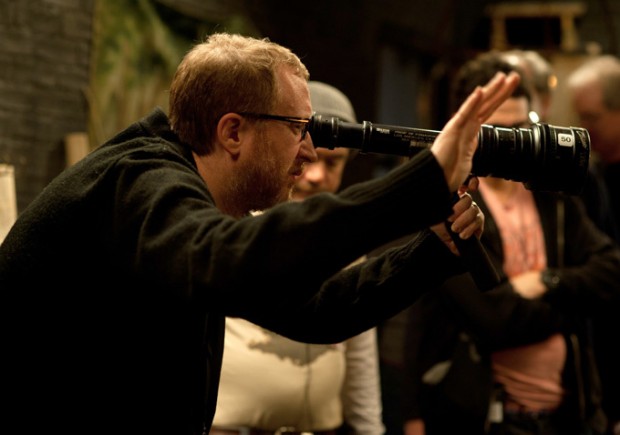
It was almost too perfect: as I enter a room located on the 42nd floor of Manhattan’s Trump SoHo, James Gray is looking past the vast metropolis below him and focusing on the distant sight of Queens. This can’t be any great surprise to those who know the man’s filmography, a small-but-stellar collection that somehow reveals new layers of a hometown as well-photographed as his, bringing a sense of visual freshness and vitality while fusing character and place into an operatic harmony. You’d be forgiven in forgetting: it’s been more than five years since the release of Two Lovers — his greatest picture: likely a masterpiece, and the showcase for what may very well be Joaquin Phoenix‘s finest performance — and just about a full twelve months since his newest effort, The Immigrant, premiered at Cannes.
But I couldn’t sense any frustration when speaking with Gray, who’s as open and accommodating as he is fiercely intelligent. Having now seen The Immigrant twice, I’d come prepared with a number of questions covering several topics — only to find many falling to the side, yours truly instead compelled to follow the conversation wherever and however the interviewee might lead it. (Indeed, the trio of terrific performers — from Marion Cotillard, Jeremy Renner, and Phoenix, the lattermost of whom plays a character that, in scripting and turn, is hard not to increasingly obsess over — are never mentioned once.) What follows is, if I may say so, a discussion that befits something as complex and layered as the film itself, which we can only pray makes it to a decent-sized screen in your area before long.
By the time I’d turned on my recorder, we were already off and running, with the various inconveniences inherent to New York travel starting our long discussion:
James Gray: It took me, in typical New York fashion, like, forty minutes to get, like, five blocks! [Laughs] It was also really funny, because when I got in — which was two days ago — [Laughs] first of all, there was the train derailment in Queens, right? So to get from Kennedy Airport to my hotel at 5 p.m. on a Friday night took over three hours. Then, that night, they were doing construction on the street below the hotel. [Laughs] All night: “BEEP. BEEP. BEEP. BEEP.” You know that thing where you back up and it makes that noise? [Laughs] And at that moment, I said, “Why do I like New York? I think I hate New York!” It was really bad. Anyway, I’m sorry.
The Film Stage: No, no, it’s fine.
[Leans over, looks at clock] We’re okay for another two minutes, right? We can just bullshit.
It’s funny, because one of the first things I’d hoped to ask was if you liked being back in New York to conduct promotion. It’s been playing around: you’d brought it to Cannes, and I know you stopped in Chicago at some point, but now you’re back here.
Well, I went to Chicago for about three hours. That was one of the craziest trips ever. By the way, I love Chicago. I don’t know if you’ve ever been.
I have not.
It’s a fantastic city: they have great museums, and it’s an incredibly beautiful place. But, yeah… well, it’s strange, you know? It’s weird. I did come for the New York Film Festival.
I had attended the screening and press conference.
That was great; that was a lot of fun for me. I have to say, I had never had a film of mine play their before, and I guess I didn’t think about how important it was to me until it happened. When they told me that they were going to play the film, it was all I could do not to shed a tear, as corny as that sounds; I was thrilled. You know, I grew up over there [motions out window, toward Queens], nine miles in that direction, Queens. So it’s very weird for me to be here, actually. Very weird for me to be in this space. Growing up I never had a view of Manhattan like that, I’ll tell you that.
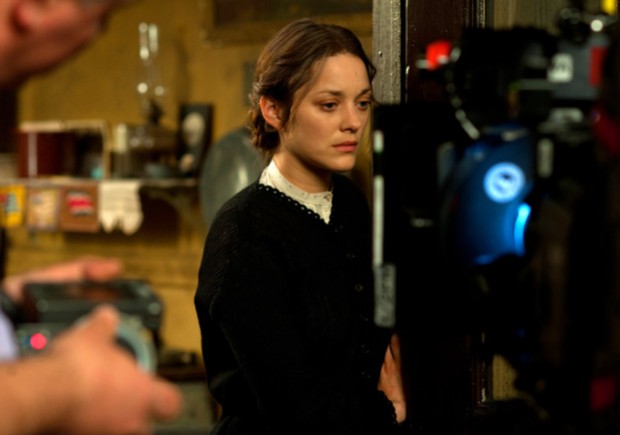
Where are you living right now?
I live in Los Angeles, for many reasons. Obviously I was here for the movie, and I moved back to L.A. because… how do I put this without sounding crass? I kind of couldn’t afford to live in New York. I have three children whom I love dearly, and for me to live here, the infrastructure costs, they’re huge. Which wasn’t even the case as of about, you know, ten years ago, but this whole “1% / 99%” thing has become more evident in London, in New York — in Paris, now, even a little bit — and it’s become so expensive. I mean, even things like a quart of milk is, like, twice as expensive in New York as it is in California. So, for that reason, we moved out there. But my wife and I were talking. We talk about it all the time: we would love to move back here. We love it here; it’s great.
Still, with that in mind… your movies — including this one, a period piece exploring New York — still ask us to look at the city in a different way. They seem to capture it in a manner I don’t see often, so I wonder — even speaking broadly, in terms of your whole career — if you started looking at New York differently once you’d become a filmmaker, after viewing it through a camera lens.
Well, the way I’d look at it is, first of all, most of the films that I saw about New York, growing up, did not capture the New York that I knew. That doesn’t mean they didn’t capture New York. Like, if you looked at a Woody Allen movie from the late 1970s — if you looked at Manhattan or Annie Hall — it would certainly capture New York in the ‘70s; certainly Annie Hall does, really. But I didn’t grow up in Manhattan; it wasn’t the New York that I knew. I knew, kind of, much more the “working-class,” Archie Bunker side to the city. So I have, of course, a great love, obviously, for those movies. To say I love Martin Scorsese’s films is the understatement of the century, and Francis Ford Coppola’s Godfather films, of course — they were shot here. As much as I adore them — and they’re my favorite movies — they weren’t about Queens, you know? Working-class Queens, where I was from.
So it was always my attempt to put that — and also Brooklyn, where my grandparents are from and all of that — on film. So what you’re saying… I mean, I’m very grateful for it, but it’s just an attempt to put my grandparents’s place on film and my place on film. My home plate, where I grew up, was The Yards, and where my grandparents grew up has been Little Odessa and Two Lovers; We Own the Night is sort of a mix of both. So the new film, that’s actually my grandparents when they first arrived. It’s sort of my attempt to be as personal as possible, is really what you’re talking about.
I’ve heard you talk about this as your most personal film, having based this on recollections grandparents provided when you were a child. Seeing it, I obviously thought of The Godfather Part II or Once Upon a Time in America, but it still felt like your vision of the city. I guess what I’m trying to ask is if this bore more of a cinematic influence than any other film you’ve made.
The influences of The Immigrant would probably be very unlikely for you. They weren’t… you’re quite obviously… Godfather II, Francis did that perfectly. I mean, you cannot capture the Lower East Side of Manhattan from 1917 — I think that movie takes place then — in a way that’s any better. So we didn’t watch it before shooting this, because we knew that, no matter what we did, we would owe a debt to it. We did look at Fellini’s La Strada, believe it or not, which took on a kind of… it was almost like our Bible. Which was weird, because what we were trying to do was not make a historical document; we were trying to do something that had almost a fable simplicity about it.
So the cinematic influences that you’re talking about — Godfather II, Once Upon a Time in America — Once Upon a Time in America we didn’t watch at all, because that is very much Sergio Leone’s kind of fantasy. I mean, he’s a great director, but it’s a different thing. We really looked at the historical stuff. We looked at autochromes. Do you know what autochromes are? I think I may have talked about it in New York.
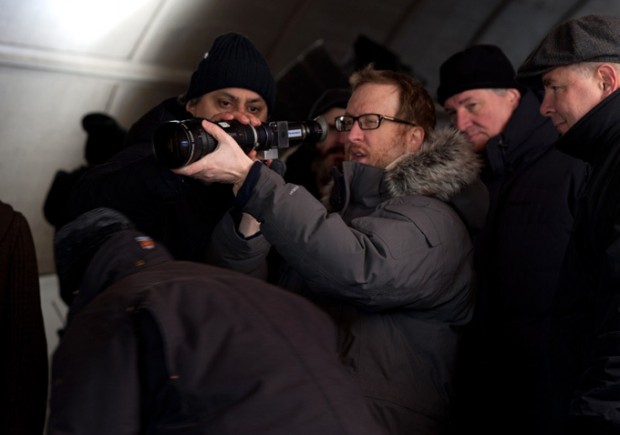
You may have.
I may not have. I don’t know; you forget these things. But it’s basically almost like fake color photographs, where it’s a black-and-white series on glass, then they dye each pane of glass a different color, and when they put them together it looks like color. This is 1905, 1910 — the Lumière Autochromes, they’re called. So we looked at those, and we looked at the Ashcan School of Painters: Everett Shinn, William Glackens, George Bellows, John Sloan — a very important group of painters from the turn of the last century. Edward Hopper was one of them, too, although a little bit later.
We tried not to get cinematic influences, but then you wind up, anyway, you know. It’s, like, America, America and Godfather II, and then it winds up in the movie because I’m a movie nerd. So you can’t really avoid it. But usually, on other films, you’re quite right: I have watched other movies before making the film. Like, for The Yards, I watched Rocco and His Brothers and showed it to the crew; we watched it 400 times. For this, I tried not to do that, but they ended up being in there, anyway.
I’m glad you can talk about these different processes which set it into motion, because both times seeing the film I find myself really astounded by the palette. There’s the saying, “They don’t make them like they used to,” and that’s kind of how I feel about this one. I’d have to ask how much of the visual design comes from you and what’s the work of cinematographer Darius Khondji. “How that relationship works” is essentially what I’m trying to ask.
Right, right, right. It’s a very good question, because it’s a different dynamic with different cinematographers. It actually depends on the cinematographer. I prefer a lot of input from the people with whom I’m working, because if… I’ve said this before, but it’s true: the process demands huge ego by the director — particularly if you’re a writer-director — to say, “Okay, what I’ve written is so important that we should spend millions of dollars and years on it. And then once you get to make the film, once you get to that point in the process, to forget your ego completely, and to start including everybody’s ideas that you think will help the movie.
So Darius and I worked very closely, and I think once I laid down the ground rules about what I was after, he sort of went and expanded upon what it is I and in mind, and it was he who brought to me a lot of religious paintings. He talked about the heavy religiosity which was in the script — which I didn’t even really, consciously think about, and which, in candor, has been quite under-discussed. You know, the serious degree to which religion played a role in those characters’ lives. Because we live such a secular existence now, in New York, in 2014. Europe is very secular as a continent. You know, the middle of this country is not so secular, but a lot of us tend to scoff at it. But the truth is, it’s an important thing in people’s lives; it was important for her.
So he brought to me a lot of religious painting, which I hadn’t thought about — I had thought more about the Ashcan School — so we talked a lot about the color scheme. The way that we discussed it, in terms of the autochromes, we also talked about, you know, the quality of the air, which was incredibly bad. From 1920, it was mostly all coal- and wood-burning that provided it, so there would have been a huge amount of particles in the atmosphere — so this idea of a lack of sunlight was not some conceit that we created to be cool. It was really based on reading about what the heck was going on in the city back then.
And also, this color palette — which is very much Gordon Willis, Vilmos Zsigmond, all those guys — comes from a place which is from historical fact. There’s no fluorescent light, obviously, in 1920; it was mostly gas light in the tenements. There was some electricity, but not a lot — and you’re talking gas light, which has a very kind of oak, burnished look to it. So it would be ahistorical for me to make a scene that had a kind of a green pallor or a blue color palette. Also, the fabrics were earth tones. The suits… men basically had two suits that they bought and wore their whole lives: the thread count was the thickest and most-tough suit ever, and they were black or brown. So the history of it really dictated a lot of the color palette, but also it was this religious-painting aspect which Darius brought to it.
So each cinematographer you work with in a different way, but I was very specific with Darius and Darius was very specific with me. It was a great collaboration; I loved him. I’ve had great collaborations with all the cinematographers with whom I’ve worked. I mean, I loved Harris Savides, although he’s dead now, which is quite tragic. But I had the same kind of relationship with him. That’s the most rewarding thing about making a film, for me — that and the sound mix. [Smiles]
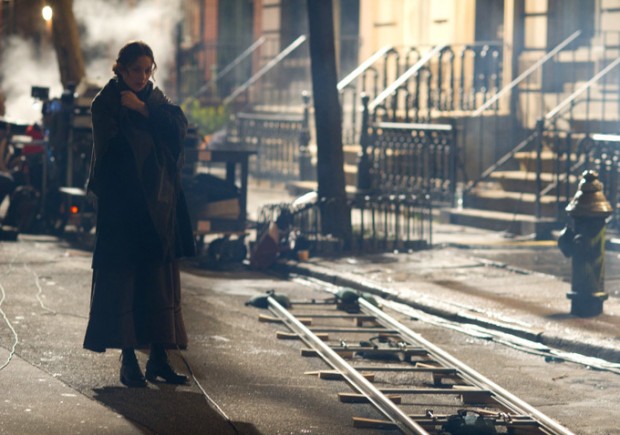
There’s that burnished look, which is so ingrained that your divergences are a bit startling — these moments with a gray, white-ish tone to them. I feel like there’s an emotional play there, particularly when Ewa has a dream of her sister. You can talk about it in these very technical terms, as well as a historical —
I’m sorry. Am I getting too technical?
No, it’s fascinating. I like hearing that you’ve thought about something such as thread count, which I think many filmmakers would just pass up. At the same time, there’s just such an emotional current there.
Oh, absolutely; it’s 100% of the experience. I mean, look: you can research the thread count of a suit all you want — and that’s nice — but if it doesn’t work emotionally, it’s worthless. I mean, you mention the dream that she has of the sister, which we overexposed the film at that point — which we did on purpose, because you want some moment of relief. Visual relief. It couldn’t be 100% dark with blacks and browns. We did try to vary it a little bit without going crazy.
You know, it’s interesting you’re talking about this, because I had seen, on the plane — of course I’ve seen it about a million times — but I watched Bonnie and Clyde on the flight here. It is, I think, a great, great movie, and some people maybe say “dated”? I don’t know; I think it’s fantastic. In the movie, the photography is one thing, and about three-quarters of the way through the movie, she says, [impersonating Faye Dunaway] “Oh, I wanna see my mama!” And they go see Faye Dunaway’s mother, and the mother says, [impersonating Mabel Cavitt] “You best keep runnin’, Clyde. I don’t know…” And it’s, like, the saddest scene in the world. And, visually, it looks completely different from anything else in the film: heavy filtration in front of the camera, this slow-motion in this weird, kind of step-printed way, and it seems kind of… almost distant, irretrievable.
And the scene is remarkable. Not just because it’s a great scene, which it is, and brilliantly acted, which it is — and the context, narratively, is great — but the style of it is different from the rest of the film, and, as a consequence, the emotional impact is even more heightened. So you’re always looking for moments where you can give some measure of visual relief, because it’s about the emotion of it. If it’s all one color — which I’ve been guilty of, by the way; I’ve made that mistake — then you have to kind of vary it as best you can. It’s tricky, though; it’s a very tricky balance, because what you’re asking me, what we’re talking about here… if you vary it too much, then the film starts to lack consistency, which is important. But if you don’t vary it at all, it lacks texture, variety — it’s monotone. So I don’t know if I’ve mastered that balance at all; it’s a very difficult thing.
By the way, it’s also different for different people: some people demand more consistency from the films, and some people demand less. There’s no way. You just do what you think feels right. but of course it’s always linked to the emotion, and when we go through the script with the cinematographer, that’s the first thing we always talk about: what is the core emotional idea — narrative idea and emotional idea — in every scene? And how do you highlight that, visually? So that’s where you come at it first, I think.
We’re speaking of these very in-depth components in building a film, so it feels strange to bring up a movie’s trailer. But I know critics who were quoted therein, and one had said you yourself compiled this preview.
Well, I didn’t choose the quotes. What happened was, there was an international trailer which I had nothing to do with — and, in candor, I saw the international trailer and hated it. I thought it was really cheesy and it didn’t represent the film at all, so knowing that people might want to use the international trailer, I said to my editor, “You know, we better cut together our own trailer — and if they don’t like it, fine. But if they like it, great.”
So we cut it together, and the international trailer had quotes, too, so I just left slugs for the quotes. The assistant editor, he found a bunch of quotes. But the edit was the edit that I put together, and, to their infinite credit, the Weinstein Company said, “We love the trailer. Let’s just put this out.” And they changed it not at all, which is almost unheard of. I like the trailer, but who the hell knows?
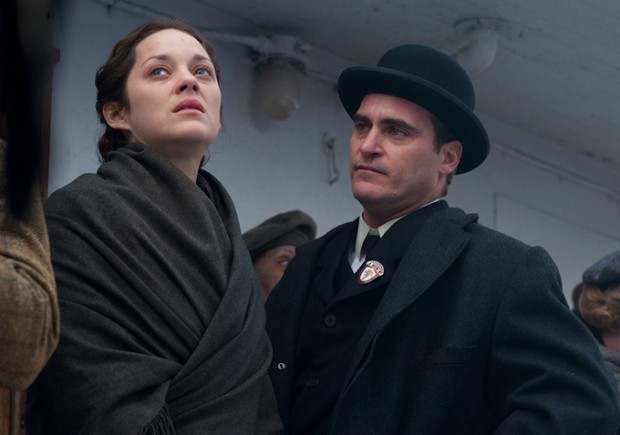
I think it’s beautiful, selling the movie very effectively. I’d seen it back in October and was soon to see it again, so I thought watching a preview was unnecessary. Giving it a look after hearing you were involved, I found it magnificent. I guess I wonder, the process of editing a trailer —
Very different. Completely different.
This was all new to you?
[Laughs] Totally new; I didn’t know what the hell I was doing. It’s really different. I’m not an expert on that, let alone other things, for sure. My editor and I just basically kind of… you keep a little mystery, but, at the same time, you want to indicate what the story is, and you want to feature some of the film’s visual splendor, but you don’t want to reveal all of it. I don’t know. We just kind of winged it a little bit, to be honest with you. But I’m glad you like it. We looked at the trailer to Raging Bull. What other trailers did we look at? We looked at the trailers to Raging Bull, we looked at the trailer to The Shining — which is actually one shot. It’s just the blood coming from the elevator doors. We looked at a bunch of movie’s trailers.
A lot of great movies have terrible trailers, by the way, because a lot of filmmakers don’t generally edit the trailer — and, by the way, that’s probably a good thing, because the filmmaker is too close to the material. But it had been, remembering this, a year since I’d shot the movie, so I had some distance from it, you know? Which is weird; usually that’s not the case. And when we were cutting the trailer together, I realized I hadn’t seen the film in a year, so I had, not a lot, but some distance from it — more than you usually do.
Maybe, in this instance, there was but one benefit to having that long gap between its premiere and stateside release.
It’s interesting. I don’t know how that’s going to… alter or not alter the perception of the film. It’s very strange to me. You never know: some films get hurt by it, and some films get helped. There’s no way to know.
In closing out: I’m not so interested in outright asking what you’re doing next. What I am interested in is how you seem to have more potential projects on your plate than ever before — at least after a film has come out. It seems like you have several options out there, and what I would ask, just to end things on, is if it feels strange to have this option, since it feels like a real pick-up in post-film tempo.
It feels good. You know, making films is very hard; it’s really hard. It’s hard on every level, and I love doing it. It’s a beautiful… it’s funny: the other day, a very close friend of mine said to me, we were talking about luck. You know, “Do you have bad luck for this or bad luck for that?” I said, “I don’t have bad luck at all. To make a film, you’re, like, the luckiest person ever.” I just want to keep doing it, and one of the frustrating things for me is that I’ve made five movies — which is not bad, and I’m pretty young, comparatively. But I also started at 23. My first film, I was 23. So I’m pretty slow.
I’m not slow; the scripts don’t take that long. But to get them made has been very hard and taken a long time. I miss the privilege of making films, so what I’ve tried to do lately is to attach myself to more things, because I’m interested in a lot, and whatever goes first, I go make. So that’s what I’m trying to do. I’m trying to work more, and, in the end… because it’s not like 1928 or 1950. [Pause] Actually, 1950, that period is the studio period, right? The ‘30s and ‘40s, and then 1949 comes in, antitrust, and it’s pretty much over. But back then, you know, Alfred Hitchcock made 60 movies. John Ford made 80 movies.
What you find, as narrative, is really difficult; telling a story, on film, is really hard. It’s like a craft. I’ve talked about this, too: I want to keep doing it and get better at it, because I’m not where I want to be, and a lot of that is an element of craft. So you ask if it feels weird. It’s very strange, and in a great way, because I want to be able to keep doing it, and I hope I can.
I hope you can, too.
Thank you. I mean, some people don’t. To me, it’s all you can ask, because it’s a great privilege.
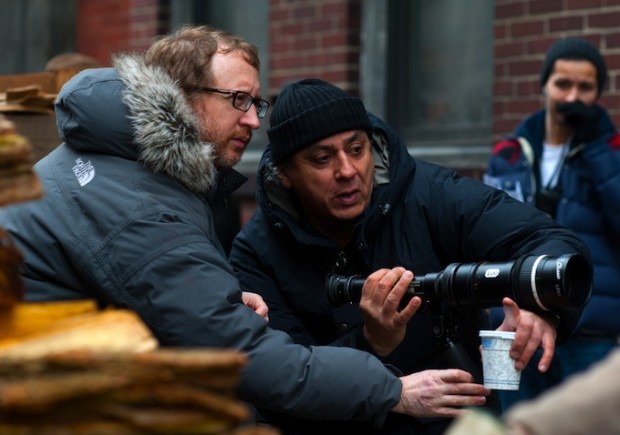
The Immigrant will open in New York and Los Angeles on May 16, with further cities receiving the film in coming weeks.

